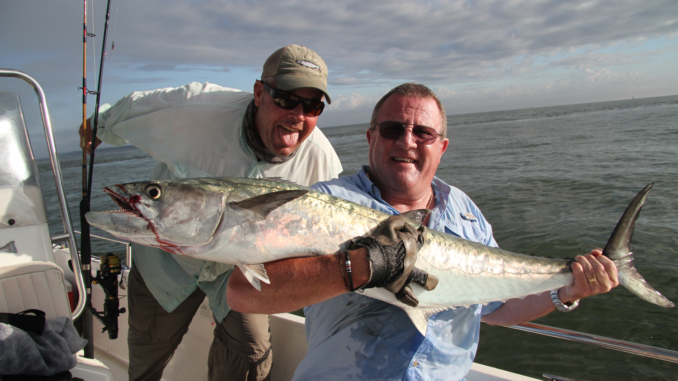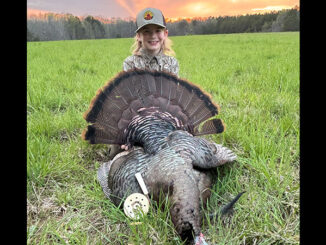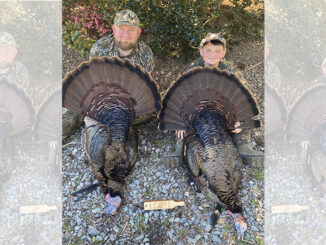
Outside the Georgetown jetties, color changes are the key
Guide Steve Roff of Georgetown concentrates on tide lines this month, because the baitfish will be thick and the king mackerel will be there, feasting away. Anywhere Roff can pick up a net full of large menhaden can easily bring a hot king bite for his clients.
“June is a fantastic month to catch king mackerel out of Georgetown,” said Roff (843-446-7337). “The kings show up strong right behind the big menhaden schools.”
By June, the ocean water temperatures are climbing into the high 70s and low 80s — perfect conditions for king mackerel close to shore. The tide lines tailing from the inlet at the mouth of Winyah Bay will stretch no more than 5 miles, creating a perfect opportunity for both menhaden and apex predators like kings.
While tide lines can show up outside of almost any inlet, the tide lines outside Winyah Bay are especially impressive due to the three rivers whose waters wind up in the Atlantic in one place, all at one time. The dirty river water plows outside the jetties and forms a distinct color-change up against the clean, green ocean water.
“We see the best tide lines in the ocean out of from the inlet when the tide is about halfway down on a falling tide,” he said. “The baitfish feels safer along the tide line in the dirty water, and they will stack up there.”
Roff searches for the largest menhaden he can find, with hand-size being the minimum. Slow-trolling live bait along the surface with flat lines is the way to make it happen. Roff will slow-troll on both sides of the tide line; sometimes the kings will be on the dirty side, and other times, they will be on the clear side.
He will zigzag across the tide line, and something will usually take his bait rather quickly. But it may not always be king mackerel. Big sharks, bull reds and tarpon patrol these tide lines, looking for an easy meal.
To up the ante, Roff looks for places where a tide line rolls over a section of live bottom or an artificial reef. It will really get the rods doubling up.
“Line up livebottom or a wreck and the tide line together with a spread of big menhaden, and you will be way ahead of the game and will most certainly get bit,” he said.




